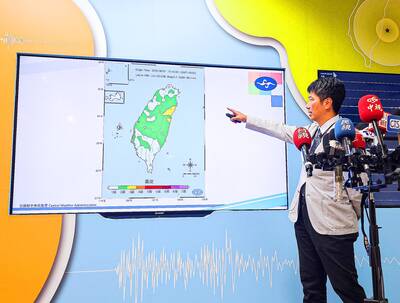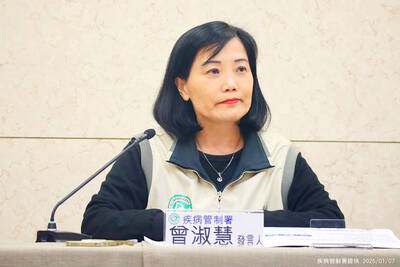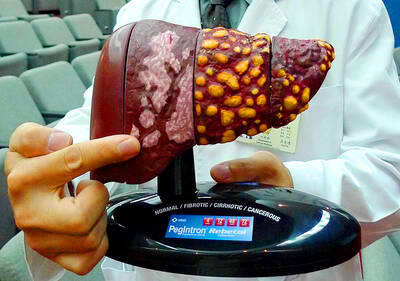Sustained efforts will be needed to detect and understand China’s military approach following the recent showcase of its military hardware during the Oct. 1 parade in Beijing, said Dean Chang, a research fellow at the Heritage Foundation.
The People’s Republic of China celebrated its 60th national day on Thursday with a display of domestically developed weaponry in its largest-ever parade, which included nuclear-capable missiles, fighter aircraft, aerial drones and other advanced weapons.
Chang said in an article that in some respects the big guns displayed were a distraction.
Lower-profile command, control and communications systems — such as airborne early-warning and control aircraft and satellite-communication devices — more accurately reflected the comprehensive challenge of China’s growing military capabilities, he said.
These systems might not look particularly special in a parade, but they evince the increasing sophistication of China’s strategic thinking and technology, he said.
China is not aiming to match the US weapon-for-weapon, he said. Rather, it is pursuing an “asymmetric” approach. Beijing’s view of future warfare, expounded in People’s Liberation Army (PLA) analyses, focuses more on enabling the PLA to gather, transmit and exploit information, while denying an opponent that same ability, Chang said.
Less noticeable, but arguably even more important and worrisome, Chang said, is a coherent doctrine and improved training regimens. PLA training efforts include extensive exercising of command-and-control capabilities, employing forces that cross military region boundaries and “conducting training in complex electromagnetic environments,” a reference to electronic warfare and cyber warfare.
He said the US needs long-term, in-depth analyses of Chinese capabilities that go beyond the “bean counting” of new systems to look at logistical capabilities and training regimens.
This will require extensive examination of Chinese-language material such as PLA reference volumes, textbooks and other official publications, as much of this will involve doctrinal changes and adjusted metrics rather than physical systems. This, in turn, entails expanding the ranks of analysts familiar with Chinese military publications and capable of assessing their authoritativeness, he said.
Addressing changes to Chinese strategy will also require maintaining a substantial US force in the East Asian region and conventional capabilities in the area — both to reassure allies and to signal to China that the US has not abandoned its commitment to the region, he said.
The most difficult challenge for US policy-makers, however, will be interacting with members of the PLA. There is arguably no better means of learning about changes within a military than by talking with its members, observing its exercises, and going to its academies and institutions of higher military education.
He said the US clearly continued to be the dominant military power in the Asia-Pacific region, but that China was gaining fast and that Beijing’s expanding range of national interests and military capabilities suggest there will be greater likelihood of contact with the US, both in and outside Asia.
It was important to reduce the chance of misunderstandings or miscalculations, both in terms of capability and intentions, he said, but this would be impossible unless US analysts get access to more data about China’s capabilities.
Also See: EDITORIAL: An awkward silence on Oct. 1

The Taipei Summer Festival is to begin tomorrow at Dadaocheng Wharf (大稻埕), featuring four themed firework shows and five live music performances throughout the month, the Taipei Department of Information and Tourism said today. The festival in the city’s Datong District (大同) is to run until Aug. 30, holding firework displays on Wednesdays and the final Saturday of the event. The first show is scheduled for tomorrow, followed by Aug. 13, 20 and 30. To celebrate the 30th anniversary of Disney Pixar's movie Toy Story, the festival has partnered with Walt Disney Co (Taiwan) to host a special themed area on

Aftershocks from a magnitude 6.2 earthquake that struck off Yilan County at 3:45pm yesterday could reach a magnitude of 5 to 5.5, the Central Weather Administration (CWA) said. Seismological Center technical officer Chiu Chun-ta (邱俊達) told a news conference that the epicenter of the temblor was more than 100km from Taiwan. Although predicted to measure between magnitude 5 and 5.5, the aftershocks would reach an intensity of 1 on Taiwan’s 7-tier scale, which gauges the actual effect of an earthquake, he said. The earthquake lasted longer in Taipei because the city is in a basin, he said. The quake’s epicenter was about 128.9km east-southeast

BE CAREFUL: The virus rarely causes severe illness or death, but newborns, older people and those with medical conditions are at risk of more severe illness As more than 7,000 cases of chikungunya fever have been reported in China’s Guangdong Province this year, including 2,892 new cases last week, the Centers for Disease Control (CDC) yesterday said it is monitoring the situation and considering raising the travel notice level, which might be announced today. The CDC issued a level 1 travel notice, or “watch,” for Guangdong Province on July 22, citing an outbreak in Foshan, a manufacturing hub in the south of the province, that was reported early last month. Between July 27 and Saturday, the province reported 2,892 new cases of chikungunya, reaching a total of 7,716

STAY VIGILANT: People should reduce the risk of chronic liver inflammation by avoiding excessive alcohol consumption, smoking and eating pickled foods, the physician said A doctor last week urged people to look for five key warning signs of acute liver failure after popular producer-turned-entertainer Shen Yu-lin (沈玉琳) was reportedly admitted to an intensive care unit for fulminant hepatitis. Fulminant hepatitis is the rapid and massive death of liver cells, impairing the organ’s detoxification, metabolic, protein synthesis and bile production functions, which if left untreated has a mortality rate as high as 80 percent, according to the Web site of Advancing Clinical Treatment of Liver Disease, an international organization focused on liver disease prevention and treatment. People with hepatitis B or C are at higher risk of